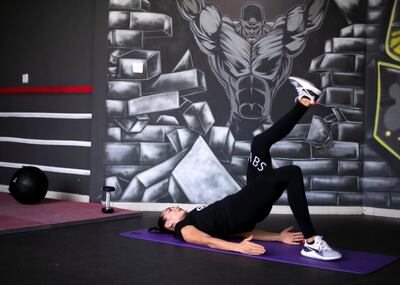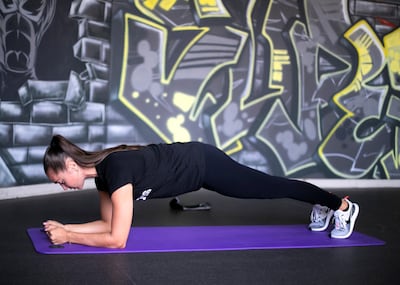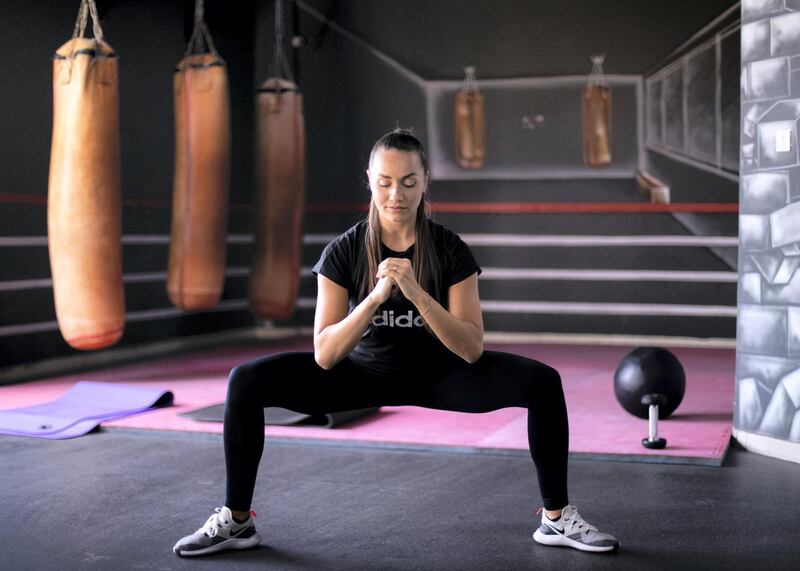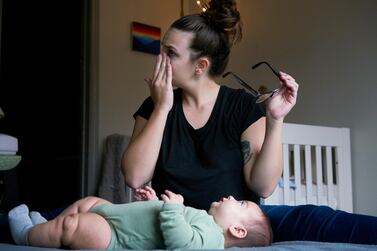I swing my leg over the side of the bed to get up and tend to the baby who, judging by the wails on the monitor, is in need of a nappy change. There is an intense burning sensation along my inner thigh, a pain comparable to the hours I spent in hospital stretching the same muscles during the pushing stage of giving birth. I thought that was hard, but the aches I've been feeling over the past few weeks – when my legs turn to jelly and my shoulders feel like they might pop out of their sockets – seem just as agonising. Eight months on, I've only dropped five kilograms and, desperate to fit into my old jeans, I've been hitting the gym.
My mother tells me that I'm putting unnecessary pressure on myself, that it takes time to lose the baby weight and my body may never look the same. But every time I browse Instagram, I'm faced with countless images of uber-skinny mummies dressed to perfection, with flat tummies and proportionate hips. Some post images of their pregnant bellies side by side with images of their trim bodies a few months – or even weeks – after birth. My journey thus far is incomparable to these photos, but I'm eager to catch up.
Build body strength postpartum

Dubai personal trainer Olga Martinica, who is part of the team at Athletic Body Shape, has many clients who seek to shed baby weight. The most common request she gets from new mothers is to help them lose weight "as fast as possible".
“But it isn’t magic, and in postnatal cases we need to concentrate first on improving health, bringing body strength back and fixing post-delivery issues – in some cases rectus diastasis or pelvic strength,” says Martinica. “I try to explain that the weight they have gained over nine months cannot disappear in a month or two, so the priority will be nutrition, proper rest and a slow introduction to exercises for the first few months, then results will follow.”
Don’t eat for two
Truth be told, nutrition wasn't something I took very seriously when pregnant. I spent many a night binge-eating burgers and pizza pies, telling myself that I was eating for two; a myth that Dr Gul E Rana, obstetrician and gynaecologist at the Canadian Specialist Hospital in Dubai, is quick to shatter.
"It's a misconception that pregnant women can eat whatever and however much they want, but junk food is a complete no-no," she says. Instead of eating double, she says mums-to-be should consume a higher quantity of nutrients such as folic acid, calcium and iron.
“For healthy women, between 11kg and 16kg is the optimal increase during pregnancy,” adds Dr Rana. “Those who put on more weight than the recommended range may face difficulty in shedding it after.”
Maintain your fitness game before and during pregnancy
For mums-to-be who are looking to have some semblance of control over their bodies, fitness is key. "Women who have been active before they conceive have an easier pregnancy," says Dr Rana. However, she warns women against implementing any drastic change in their routine.
“It is not advisable to start new exercises, as painkillers can’t be prescribed in case of muscle cramps or pain,” she says. “The best exercise for women who are [usually non-active] is walking for 20 or 30 minutes a day, or swimming,” she says.
Dubai resident Sidrah Zahid attended prenatal yoga classes while pregnant, and started practising Pilates 10 months after her daughter was born. "If I was familiar with prenatal Pilates before and had added it to the mix, it would have been a game changer," she says, adding that the routine has helped relieve the severe lower back pain she experiences, which can be a side effect of having an epidural.
“Pilates helps strengthen your pelvic floor, the muscle that supports your bladder and bowel, and reduces the risk of involuntary urination during or post-pregnancy. It also strengthens your core muscles which help to cope with the weight of the growing baby,” says Zahid.
Exercise six weeks after giving birth

For some women, low-impact fitness activities such as yoga or Pilates are manageable pre and post-childbirth. For others, such as Latina fitness trainer and influencer Diana Ruiz, performing deep squats while heavy weightlifting at 32 weeks pregnant, is like a walk in the park.
“All women have different fitness capabilities and you shouldn’t compare yourself to others. Each body is unique and, in the end, it’s not up to science, social media, your doctor or trainer how long it will take you to transform your body; it’s about your own mindset,” says Martinica.
She recommends that new mums should rest for at least six weeks and check with their doctors before exercising. At her first session with a postnatal client, she helps them set realistic goals. “Let’s say you want to lose body fat, tone your muscles and look even better than you did before having a child. It is possible, but give it minimum one year. Then divide the plan into short-term goals with realistic results: for example, lose 2.5kg in a month, and go down one size in two months.”
She emphasises that the quality of food young mothers eat is more vital than visits to the gym. What you eat will also affect the milk if you breastfeed. "Remember that nutrition is most important, and the cleaner the atmosphere is around you – food, people and energy – the faster you'll get back on track," she says.
Zahid, who is training to become a prenatal Pilates instructor, says: “It’s definitely possible to bounce back, but it takes a lot of dedication and consistency, especially when it comes to nutrition.”
The social media conundrum
As for those svelte social media images that haunt my grid, Martinica says that Instagram claims should be taken with a grain of salt. “Social media transformations can be literally unreal. The result of an amazing before and after picture may have been achieved after a whole year, but an influencer may claim it was just two months,” she says.
Indeed, many mums remain content with their journey, unaffected by videos and photos that glamourise body transformations and weight loss. A poll of 200 UAE mothers on the Real Mums of Dubai Facebook group reveals that only 15 per cent feel discouraged by such posts, 13 per cent feel more motivated by them and 72 per cent are unfazed by them.
One group member, Anna Roberts, says with enviable self-confidence that she is against the term "bouncing back", because it implies going backwards. "As mothers we should be focused on change, growth and the new strength we have after creating life and bringing it into this world, not chasing our past."







